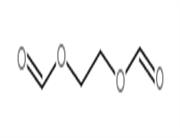Description
MK 0893 is a potent, selective glucagon receptor antagonist with IC50 of 6.6 nM, and > 200 fold selectivity against GIPR, PAC1, GLP-1R, VPAC1 and VPAC2.
Related Catalog
Signaling Pathways >> GPCR/G Protein >> Glucagon Receptor
Research Areas >> Metabolic Disease
Target
IC50: 6.6 nM (glucagon receptor)
In Vitro
MK 0893 is selective for glucagon receptor relative to other family B GPCRs, showing IC50 values of 1020 nM for GIPR, 9200 nM for PAC1, and >10000 nM for GLP-1R, VPAC1, and VPAC2. MK 0893 is active against the rhesus monkey GCGR, showing an IC50 of 56 nM in a cAMP assay with CHO cells expressing the rhesus GCGR[1].
In Vivo
MK 0893 blunts glucagon-induced glucose elevation in hGCGR mice and rhesus monkeys. It also lowers ambient glucose levels in both acute and chronic mouse models: in hGCGR ob/ob mice it reduces glucose (AUC 0-6 h) by 32% and 39% at 3 and 10 mpk single doses, respectively. In hGCGR mice on a high fat diet, MK 0893 at 3, and 10 mpk po in feed lowers blood glucose levels by 89% and 94% at day 10, respectively, relative to the difference between the vehicle control and lean hGCGR mice[1].
Cell Assay
CHO hGCGR cells are grown in Iscove's Modified Dulbecco’s Medium (IMDM), 10% FBS, 1 mM l-glutamine, penicillin-streptomycin (100 μ/mL), and 500μg G418/mL for 3-4 days before harvesting using Enzyme-Free Dissociation Media (EFDM). The cells are centrifuged at low speed and resuspended in stimulation buffer. Compounds are diluted from DMSO stocks and added to the assay at a final concentration of 5% DMSO. Cells are preincubated with compound or DMSO controls for 30 min. Glucagon (250 pM) is added, and the samples are incubated at room temperature for an additional 30 min. The assay is terminated with the addition of the FlashPlate kit detection buffer. The assay is then incubated for an additional 3 h at room temperature, and bound radioactivity is measured using a liquid scintillation counter. cAMP levels are determined as per manufacturer’s instructions. For Schild Plot analysis, aliquots of cells are preincubated with 56, 100, 178, 300, 560, and 1000 nM 9m for 30 min at room temperature prior to the addition of 0.001-1000 nM glucagon to initiate the assay. Data are analyzed using the linear and nonlinear regression analysis software GraphPad Prism, v4.
References
[1]. Xiong Y, et al. Discovery of a novel glucagon receptor antagonist N-[(4-{(1S)-1-[3-(3, 5-dichlorophenyl)-5-(6-methoxynaphthalen-2-yl)-1H-pyrazol-1-yl]ethyl}phenyl)carbonyl]-β-alanine (MK-0893) for the treatment of type II diabetes.J Med Chem. 2012 Jul 12;

 China
China



